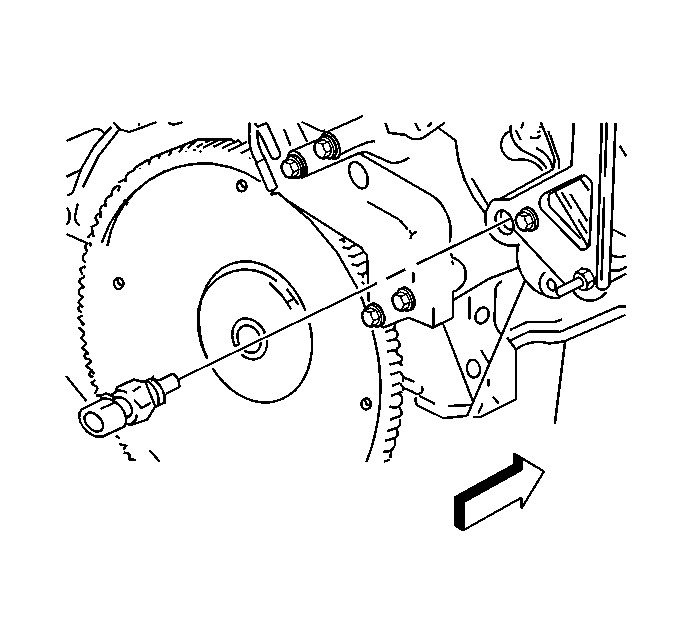Removal Procedure
- Raise the vehicle. Refer to Lifting and Jacking the Vehicle in General Information.
- Drain the engine coolant. Refer to Draining and Filling Cooling System.
- Remove the exhaust system. Refer to Exhaust System.
- Disconnect the electrical connector from the engine coolant temperature (ECT) sensor.
- Remove the ECT sensor.
Caution: To avoid any vehicle damage, serious personal injury or death when major components are removed from the vehicle and the vehicle is supported by a hoist, support the vehicle with jack stands at the opposite end from which the components are being removed and strap the vehicle to the hoist.

Notice: Use care when handling the coolant sensor. Damage to the coolant sensor will affect the operation of the fuel control system.
Installation Procedure
- Coat the ECT sensor threads with sealer P/N 12346004 or the equivalent.
- Install the ECT sensor.
- Connect the ECT sensor electrical connector.
- Reinstall the exhaust system. Refer to Exhaust System.
- Refill the engine coolant. Refer to Draining and Filling Cooling System.
- Start the engine and inspect for coolant leaks.
- The cooling system may need to be bled of air. Refer to cooling system for the proper cooling system bleeding procedure.
Notice: Use care when handling the coolant sensor. Damage to the coolant sensor will affect the operation of the fuel control system.

Notice: Use the correct fastener in the correct location. Replacement fasteners must be the correct part number for that application. Fasteners requiring replacement or fasteners requiring the use of thread locking compound or sealant are identified in the service procedure. Do not use paints, lubricants, or corrosion inhibitors on fasteners or fastener joint surfaces unless specified. These coatings affect fastener torque and joint clamping force and may damage the fastener. Use the correct tightening sequence and specifications when installing fasteners in order to avoid damage to parts and systems.
Tighten
Tighten the ECT sensor to 20 N·m (15 lb ft).
